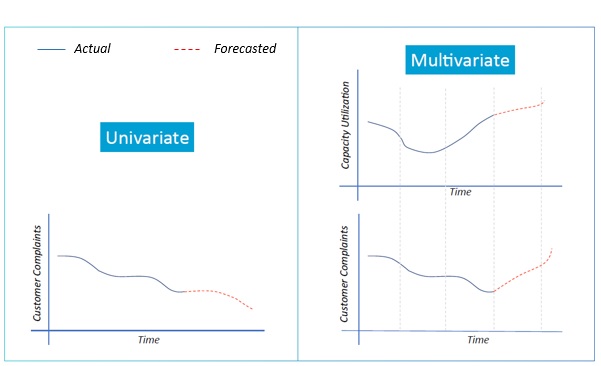Actionable predictive analytics: overcoming the analysis paralysis
Why standard forecasting analytics models fail to deliver in today’s world of complex digital networks and why telcos need a domain-specific analytics solution.
“Your analytical dashboards and visualizations look good, but I prefer actionable reports and insights”, said the deputy CEO of a Southeast Asia-based telecom service provider during one of our meetings last year. This was not just one odd instance. We have heard this many times in the past year from other CSP executives. There are many domain-agnostic AI/ML based analytics solution providers in the market, but what telcos really want is an analytical solution which provides end-to-end domain-specific actionable insights. Forecasting traffic or pointing out anomalies is one thing, but how to incorporate those recommendations into capacity planning? What is the root-cause for that anomaly so that it could be prevented in future? Instead of getting lost in analysis paralysis amidst thousands of fancy statistical metrics; a simpler, actionable and reliable predictive analytics solution is the need of the hour.
With the right mix of domain knowledge and analytics advantage, centered around the actual requirements of the network planners; Subex has come up with the concept of actionable predictive analytics. Network planners should be enabled for efficient, reliable and cost-effective capacity planning. Hence, here the focus is more on what matters to the telco network teams, i.e. the business values such as capex optimization, network performance improvement, customer experience enhancement and operational efficiency; rather than on underlying analytical components such as configured models or feature engineering.
Here are two of the most important aspects about Subex’s approach to predictive analytics which are different from the traditional forecasting models –
Multi-variate analysis
Unlike the traditional forecasting systems which predict the future trends for a metric based on the historical pattern of that given metric, in multivariate approach, the system understands the lagging or leading effect on the given KPI from other KPIs. With this, the telco can predict, in near real-time, what is going to happen in the future and adopt appropriate measures to prevent capacity issues. A multi-variate, self-learning forecasting model which runs on the in-house machine learning platform is complemented by domain-specific configurations and expertise which is equally essential for intelligent forecasting.
The figures below compare a multivariate model scenario that considers the lagging effect of KPI1 (e.g. customer complaints) on KPI2 (e.g. capacity utilization) with that of a traditional model that does not give such insights. In the first case, the operator does not get accurate results as yielded in the second case because there is a direct relation between traffic and customer complaints. For example, if there was an aberrant increase in traffic, the operator can take that fact into consideration for accurate prediction of future customer complaints.
One more use-case could be accurately predicting the time to capacity exhaust for a site if one of the neighboring sites is planned for decommissioning soon. In this case, with the help of geo-spatial analytics, the additional load on the given site due to decommissioning of the neighboring site would also be considered for calculating time to capacity exhaust.
Domain Specific Insights
Be it wireless or hybrid fiber-coaxial networks, even an accurate capacity forecast is incomplete without the required domain-specific insights. Without a proper root cause analysis for a network element exhausting soon (in terms of capacity), the network planners won’t be able to make the right decision about its proactive mitigation.
These are some questions to consider when developing your network augment action plan:
- How many customers will be impacted when a given network element hits a capacity exhaustion threshold?
- Will prioritizing the given candidate for capacity augment above other options result in the best customer experience improvement and maximized ROI?
- What is the reason for this capacity exhaust? Is it because of seasonality, periodicity or cyclicity? Is it an anomaly due to some one-off event?
- Will new Capex be required to address the capacity bottleneck, or are there alternatives to new spending?
Some of the insights that could be useful for the planners leveraging predictive analytics for capacity planning and management are shown below –
Apart from the above two key differentiators, some other important aspects for a pragmatic, accurate and reliable predictive analytics solution are scalability and flexibility.
Multi-variate forecast models need to run thousands of simulations across the network to identify the correct correlated metrics for accurate predictions. Such models need to be configurable, flexible and easy-to-understand for non-data scientists.






